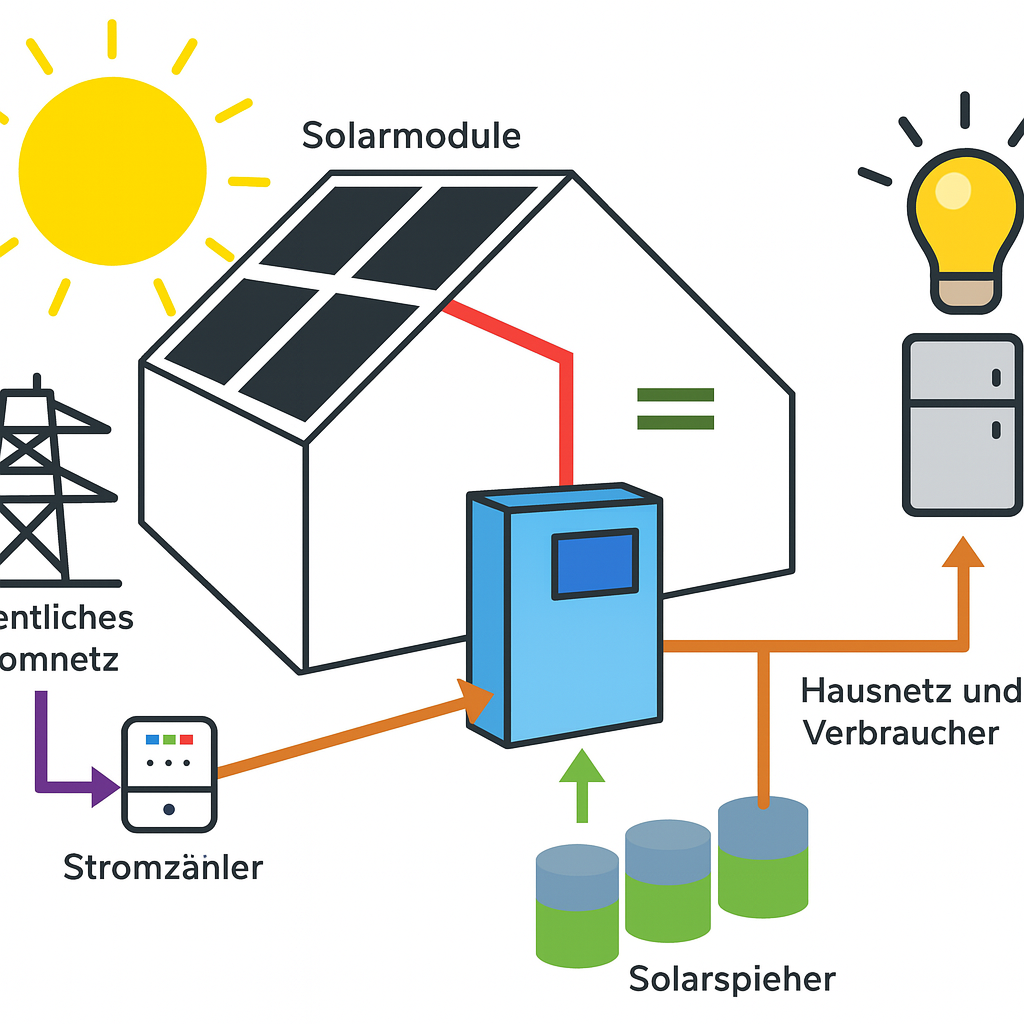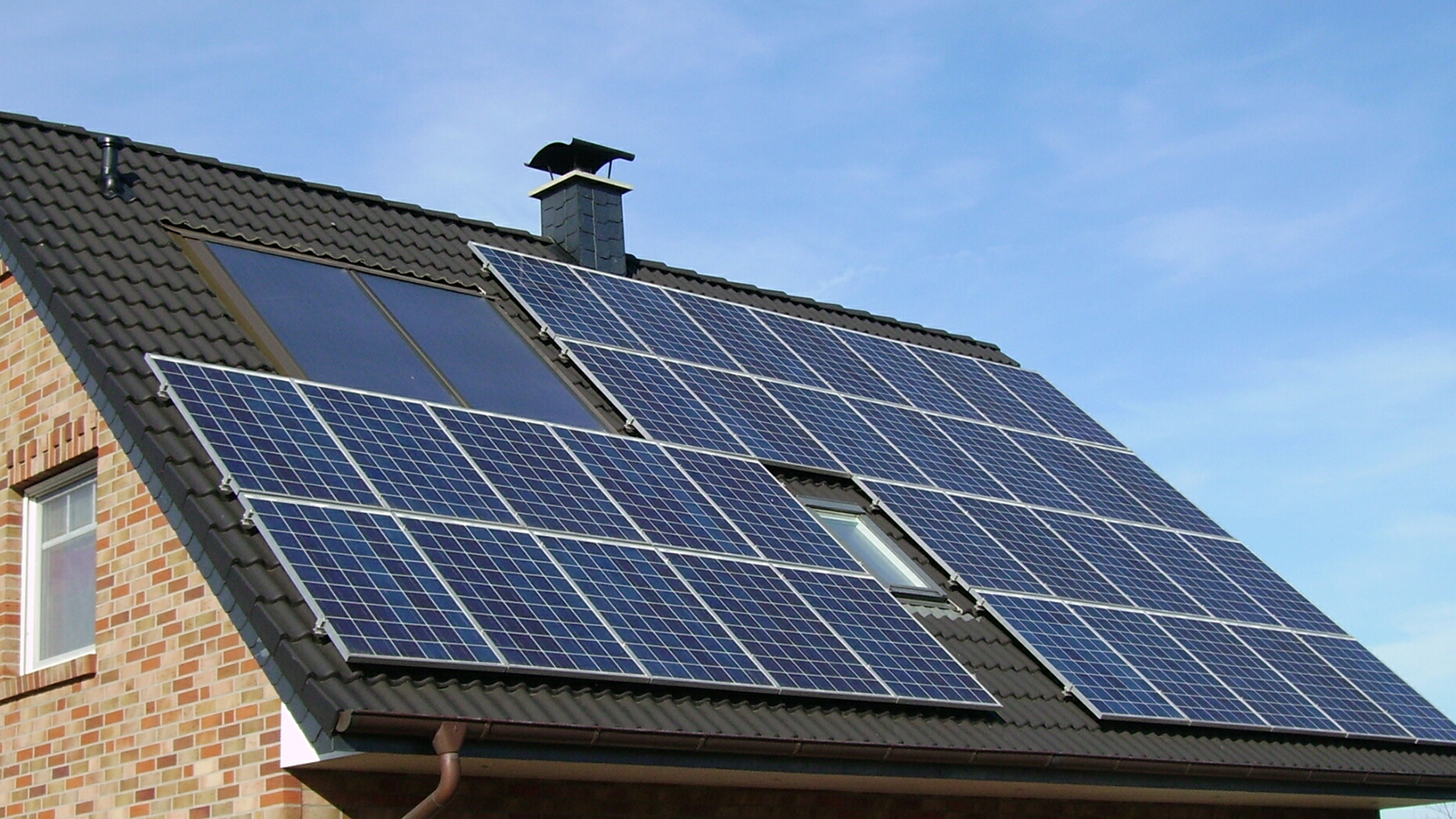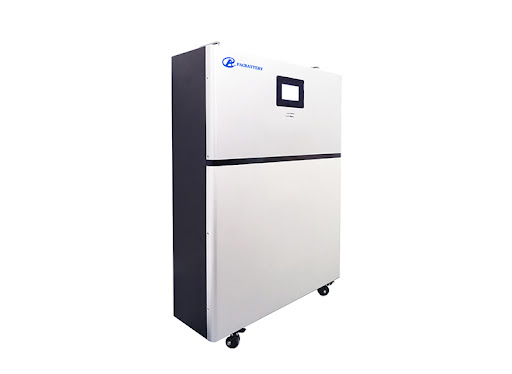Having your own solar power system on the roof of your house is now technically and financially attractive. Many manufacturers offer complete solar system kits – packages with all the essential components needed to install photovoltaic modules on your roof. But what exactly does such a set include, and what are the different variants (with or without battery storage)? This article provides a comprehensive overview of all components of a household PV system, explains their function and interaction using a schematic. We also list examples of common devices with manufacturer, model, and price. This way, you'll know exactly what devices a complete solar energy set consists of and what to look out for.
Main components of a solar system – overview
A typical PV complete kit for a single-family home contains the following main components:
- Solar modules (panels) – convert sunlight into electrical energy (DC).
- Mounting system – brackets, rails, and fixings to mount the panels on the roof (varies depending on roof type).
- Inverter – a device that converts the DC produced by the modules into standard household AC (230 V, 50 Hz).
- Cabling and connectors – solar cables, plugs (e.g., MC4 connectors), and possibly fuses, as well as connection to the household electrical system.
- Battery storage (optional) – a battery system that stores excess solar power for use in the evening or on cloudy days.
- Charge controller (optional) – a solar charge controller that regulates battery charging in off-grid systems (in grid-connected systems with hybrid inverters, this function is often integrated).
How the components work together
The components listed above work together to generate usable electricity from sunlight for your home. Solar modules are usually connected in series into so-called strings. They produce DC power when sunlight hits them, which flows through solar cables to the inverter. The inverter converts the DC into AC and feeds it into the household grid. This first powers the current household appliances. If the PV system generates more electricity than is being used, the excess is either fed into the public grid (if there is no battery) or stored in a battery storage system (if present). When needed – e.g., in the evening – the battery can supply the stored energy back to the home. A modern energy management system ensures that solar power is used first before drawing power from the grid.

The above diagram illustrates a typical grid-connected solar power system: The solar modules on the roof are connected via strings and a DC disconnect switch to the inverter, which in turn is connected via a meter to the home grid and the public grid. In systems with storage, a battery and control unit are also included. Wiring and connection diagrams may vary slightly depending on the system – in a separate article we show detailed examples for different scenarios.

(Example: solar panels on a house roof)
Mounting system and installation
To securely install the solar modules on the roof, a PV kit always includes a mounting system. For pitched roofs, this consists of roof hooks or hanger bolts, aluminum mounting rails, and module clamps that secure the panels to the rails. On tile roofs, for example, stainless steel roof hooks are placed under the tiles and screwed into the rafters. Aluminum rails are then mounted on top, on which the modules are fixed.
For flat roofs, special tilt brackets or trays are used to create the optimal angle and are often ballasted (weighed down) rather than drilled into the roof.
A good mounting system is corrosion-resistant and designed for the snow and wind loads in your region. In complete kits, the mounting components are usually matched to the module size and roof dimensions. Mounting material costs account for approximately 10–15% of the total system. For a 10 kWp system, you can budget around 1,000–2,000 € just for substructure and fasteners. It's worth investing in quality (e.g., systems from Schletter or K2 Systems) to ensure the PV modules remain secure for decades.
Inverter – the system’s powerhouse
The inverter is the central device in every photovoltaic system. It receives the DC from the solar modules and converts it into grid-compliant AC power that can be used directly in the household or fed into the grid. The inverter is selected based on the nominal power of the PV system – typically it has equal or slightly lower capacity than the total of the modules (e.g., ~5 kW for a 6 kWp system, since not all modules produce peak power simultaneously).
Modern inverters offer efficiencies of 97–99% and often include MPP trackers (Maximum Power Point Tracking) to always extract the optimal performance from the modules. They also include safety features (e.g., automatic shutdown during power outage – NA protection) and communication modules for monitoring via app or web portal.
There are various types:
- String inverters: Standard for most rooftop systems. Price: approx. 700–1,500 € for 5–10 kW. Examples: SMA Sunny Boy 5.0 (~1,200 €), Fronius Symo 6.0-3-M (~1,500 €).
- Microinverters: Small inverters per module. Price: 100–200 € each. Example: Enphase IQ7.
- Hybrid inverters: Combined devices for PV and battery. Price: 1,500–2,500 €. Examples: Sungrow SG5HY, SMA Tripower Storage.
Depending on the system, a separate battery inverter may be used to connect the battery to the household grid. This is necessary if a battery is added to an existing PV system that doesn’t have a hybrid inverter. Battery inverters typically cost 700–1,500 €.
Battery storage – using solar power around the clock
A battery storage system is a key add-on if you want to use solar electricity in the evening or during outages. Today's home batteries are mostly lithium-ion systems with usable capacities typically from 5 to 15 kWh. They are usually wall-mounted in the basement or utility room or installed as cabinets. The battery or hybrid inverter charges the battery with excess solar power and discharges it when needed, significantly increasing the self-consumption rate.
Battery prices have dropped in recent years but still range around 400–800 € per kWh of capacity. A small 5 kWh system starts at about 2,500–3,500 €, larger 10 kWh systems cost 5,000–7,000 €. A well-known example is the Tesla Powerwall 2 with 13.5 kWh for around 8,000–9,000 € (excluding installation). Other manufacturers include BYD, LG Energy Solution, and Sonnen. Selection depends on desired capacity and compatibility with the inverter. Note: batteries are often optional in complete kits – you can install them later.

Charge controller – essential for off-grid systems
A solar charge controller is mainly used in off-grid systems and small 12/24 V solar setups. It ensures the battery is charged optimally by the solar modules, preventing overcharging and deep discharge. In grid-connected systems with modern hybrid inverters, a separate controller is not needed as charging electronics are built-in.
There are two types:
- PWM controllers (cheaper, for small 12/24 V systems)
- MPPT controllers (Maximum Power Point Tracking) – more efficient, handle higher module voltages, and optimize charging.
An MPPT controller for a medium off-grid system (e.g., 48 V battery, 60 A charging current) costs approx. 300–500 €. Victron Energy offers high-quality models in this category. Such a controller is installed between the panels and the battery and is essential to maximize battery lifespan.
Cabling, connectors, and safety
Besides the main devices, a complete PV kit also includes the necessary electrical accessories:
- Solar cables: UV-resistant cables connecting the modules (string wiring) and leading to the inverter. Common sizes are 4–6 mm² for DC lines.
- Connectors: Standard MC4 plugs on module terminals, ensuring safe and weatherproof connections.
- Distribution boxes and fuses: Larger systems may use combiner boxes for parallel strings. DC fuses or disconnect switches between modules and inverter are also recommended for maintenance.
- Electricity meter: In grid-connected systems, a bidirectional meter is provided by the utility company to measure incoming and outgoing electricity. Although not part of the purchase kit, it is essential for billing.
- Monitoring: Many inverters come with monitoring systems (web portal or app). Additionally, energy meters or smart meters can be installed to monitor self-consumption.
Special care must be taken when installing cabling and connectors. While experienced DIYers can often handle the mechanical mounting of the modules, the final electrical connection must be made by a certified electrician. This ensures compliance with all safety standards and is required for grid connection registration.
(Here, a simplified wiring diagram of all components could be shown to illustrate the connection plan.)
System planning and next steps
A complete PV kit offers an easy entry into private electricity generation, as all coordinated parts are already included. However, before purchasing such a package, you should carefully plan the required system size and configuration. Important questions include: What is your electricity consumption? How much roof area is available? Should a battery be integrated? And what are the expected costs and returns?
To answer these questions, we recommend using our solar calculator. This online tool helps determine the optimal number of modules for your roof, the appropriate inverter size, and the system’s profitability (payback period). You’ll get precise figures for the required complete kit and your solar savings potential. Try the solar calculator to receive a detailed result tailored to your home and location.
In conclusion: a PV system is a long-term investment. Inform yourself thoroughly – e.g., through our guides here on the site – about costs and subsidies. With the right knowledge and well-chosen components in a complete kit, you too can soon produce your own green electricity on your roof.